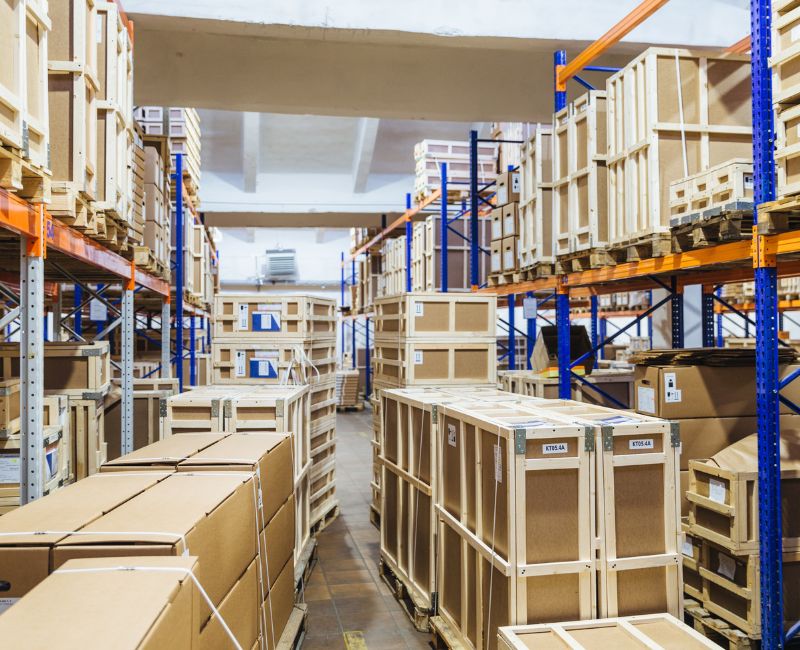In the intricate web of modern commerce, the role of logistics stands as a cornerstone in bridging the gap between manufacturers and consumers. This complex process of seamlessly delivering products from their origins to the hands of customers involves a system of operations and strategies. As parts evolve from components to complete products, the art of kitting and assembly emerges as a crucial technique within the realm of logistics.
As businesses are met with the challenge of not only delivering products quickly but also tailoring them to meet diverse customer demands, kitting and assembly processes are key factors in this pursuit. By grouping components together and orchestrating their seamless assembly, supply chain managers can optimize time, minimize errors, and ensure quality. This strategic integration empowers companies to respond to fluctuating market demands with agility, all while maintaining cost-efficiency and product integrity.
What is Kitting and Assembly?
Kitting and Assembly are two integral processes that play a vital role in transforming individual components into functional, market-ready products. Let’s delve deeper into what kitting and assembly entail, and uncover their distinct contributions to the logistics landscape.

Kitting: Bringing Together the Pieces
Kitting is a strategic practice that involves the aggregation of individual components into cohesive units, often referred to as kits. These kits can comprise a combination of parts, materials, or products that are logically grouped based on their functional relationships or intended use. Kitting serves as a technique to streamline the subsequent assembly process, eliminating the need for line workers to search for individual components across a warehouse. Instead, the necessary items are conveniently bundled, ready to be integrated into the final product.
Not only does kitting ensure that the right components are readily accessible, but it also minimizes assembly line downtime, thus boosting overall productivity. This practice is particularly valuable in scenarios where a set of components are frequently used together or need to be incorporated in a specific sequence to ensure optimal functionality.
Assembly: Crafting the Final Product
While kitting lays the foundation, assembly forms the pinnacle of this logistical process—an endeavor that involves skillfully bringing together the curated components to create a finished product. Unlike kitting, which focuses on the preliminary grouping of items, assembly is the precise arrangement, fitting, and attachment of these components to construct a coherent whole.
The assembly process demands meticulous attention to detail, as each step must adhere to exact specifications to guarantee the product’s quality, performance, and reliability. Manufacturers rely on specialized tools, equipment, and skilled labor to carry out these tasks, often following standardized procedures or intricate design schematics. The success of the assembly phase hinges on the alignment of components, accurate measurements, and thorough quality checks to ensure that the final product meets both industry standards and customer expectations.
Key Differences
While kitting and assembly are interdependent stages within the logistics journey, they serve distinct purposes and contribute uniquely to the overall process. Kitting streamlines the logistics chain by simplifying component retrieval and organization, ultimately expediting the assembly phase. Assembly, in turn, focuses on the integration of these components, transforming them into a fully functional product.
Kitting excels in enhancing operational efficiency, while assembly is the focal point for ensuring product quality, reliability, and precision. The coordination between kitting and assembly is crucial for achieving optimal production outcomes, meeting customer demands, and navigating the complexities of modern logistics.
The Process of Kitting and Assembly
Efficiently transitioning from components to a market-ready product involves a detailed process encompassing multiple stages. Let’s navigate through each stage, and outline the strategic steps that underlie the kitting and assembly processes.

Stage 1: Planning and Inventory Management
Before the physical processes of kitting and assembly can commence, planning and inventory management lay the foundation for success.
Forecasting Demand for Components
Accurate demand forecasting is paramount. By analyzing historical data, market trends, and customer preferences, logistics professionals anticipate which components will be needed for assembly.
Maintaining Adequate Inventory Levels
Striking a balance between stockouts and excess inventory is an art. Maintaining optimal levels of each component ensures a steady supply while avoiding unnecessary costs tied to surplus stock.
Stage 2: Component Gathering and Verification
This stage involves gathering the necessary components and subjecting them to rigorous verification.
Efficient Retrieval of Components
Kitting relies on a seamless process of retrieving required components from storage locations. Organized layouts and efficient tracking systems expedite this process.
Quality Control and Verification Checks
Components are subject to stringent quality checks to ensure they meet the required standards. Any subpar items are flagged and replaced to uphold the final product’s integrity.
Stage 3: Organizing and Preparing Components
Efficiency and precision continue to guide the logistics journey as components are readied for assembly.
Streamlining Component Layout
An organized layout of components within the kit minimizes assembly time. Placing components in the order of their use optimizes the assembly process.
Labeling and Packaging Considerations
Clear labeling ensures the correct components are used, reducing the likelihood of errors. Proper packaging safeguards components during transportation and storage.
Stage 4: Assembly and Integration
Assembly is where individual components coalesce into the final product.
Step-by-Step Assembly Process
Each component is positioned and secured according to a predefined sequence. Whether it’s electronics or mechanical components, adherence to the assembly sequence is important.
Ensuring Precision and Quality
Precision is non-negotiable. Quality standards are maintained through precise measurements, secure fastening, and strict adherence to assembly instructions.
Stage 5: Final Inspection and Quality Assurance
Before the product leaves the assembly line, it undergoes thorough scrutiny to ensure it meets the highest standards.
Thorough Product Examination
A comprehensive examination may involve functional tests, performance evaluations, and visual inspections to identify any anomalies.
Addressing Defects and Irregularities
If defects or irregularities are detected, they are promptly addressed, either through repairs or component replacements, ensuring that only high-quality products reach customers.
Logistics Benefits of Kitting and Assembly
The integration of kitting and assembly within logistics operations yields a plethora of advantages, reshaping the landscape of supply chain management and customer satisfaction.

Enhanced Efficiency and Time Savings
Kitting expedites the assembly process by consolidating related components, reducing the time spent on gathering individual parts. This streamlined approach accelerates production timelines, boosting operational efficiency and enabling quicker response to market demands.
Reduced Inventory Holding Costs
Efficient inventory management is a hallmark of successful logistics. Kitting optimizes stock levels by bundling components according to demand forecasts. This minimizes excess inventory, lowering holding costs and freeing up resources for other endeavors.
Improved Order Accuracy and Customer Satisfaction
Precision in kitting and assembly translates into heightened order accuracy. With standardized kits and well-defined assembly processes, the likelihood of errors decreases significantly. Satisfied customers receive products that meet their expectations, fostering brand loyalty and positive word-of-mouth.
Flexibility in Meeting Customization Requests
In a marketplace where personalization reigns supreme, kitting and assembly offer flexibility. Customization can be achieved by modifying the composition of kits or altering assembly sequences. This adaptability allows businesses to cater to individual customer preferences without sacrificing efficiency.
The benefits of kitting and assembly can be seen through the entire logistics spectrum, from operational excellence to customer delight. By harnessing these advantages, companies can expertly navigate the complex logistics landscape, setting themselves apart as agile and customer-centric businesses.
Challenges and Solutions
While kitting and assembly offer substantial benefits, they also present their fair share of challenges. Addressing these challenges with strategic solutions is essential to unlocking the full potential of these processes within logistics operations.

Inventory Management Challenges
Just-in-Time Inventory Approach: Kitting’s efficiency relies on the availability of components precisely when needed. Implementing a just-in-time inventory approach ensures that components are procured and kitted close to the assembly phase, minimizing storage costs and inventory-carrying expenses.
Inventory Tracking Technologies: Advanced tracking technologies, such as RFID and barcode systems, provide real-time visibility into component locations. These technologies enhance accuracy in kitting, ensuring the right components are retrieved and minimizing the risk of errors.
Quality Control and Inspection Challenges
Implementing Robust Quality Control Measures: Maintaining consistent product quality across multiple components can be challenging. Implementing stringent quality control measures at each stage of kitting and assembly ensures that only components meeting specified criteria are integrated.
Automated Inspection Tools: Embracing automated inspection tools, such as computer vision systems and sensors, enhances quality control accuracy. These tools identify defects and irregularities with precision, reducing the likelihood of faulty components entering the assembly process.
Scalability and Customization Challenges
Modular Assembly Approaches: To address scalability challenges, modular assembly approaches break down products into subassemblies. These subassemblies are then kitted, allowing for parallel assembly lines, reduced assembly time, and improved scalability.
Flexible Kitting Strategies: Adaptable kitting strategies accommodate customization requests without disrupting operational efficiency. Employing flexible kitting methods, such as creating variable kits with interchangeable components, ensures that customized products can be accommodated seamlessly.
By understanding and proactively tackling these challenges, logistics professionals can optimize kitting and assembly processes, reaping the rewards of increased efficiency, quality, and customer satisfaction. The strategic implementation of solutions fortifies these processes, transforming challenges into opportunities for growth and improvement.
Streamline Your Supply Chain with Kitting and Assembly
Through the essential processes of kitting and assembly, logistics experts systematically optimize supply chain operations, facilitating a streamlined and uninterrupted flow of commerce. By harnessing the benefits they offer—enhanced efficiency, reduced costs, quality control, and adaptability to customization—companies can redefine their operational prowess and elevate their market standing.
Here at Hanzo Logistics, we understand the immense value that kitting and assembly bring to the logistics arena. With strategic foresight and agile implementation, these processes can be harnessed to secure a competitive edge. The ability to respond swiftly to market fluctuations, deliver tailor-made products, and uphold unparalleled quality can set businesses apart, propelling them to the forefront of their industries. Through meticulous planning, state-of-the-art technologies, and a dedication to precision, we orchestrate logistics solutions that not only meet but exceed expectations. Are you ready to optimize your operations?



